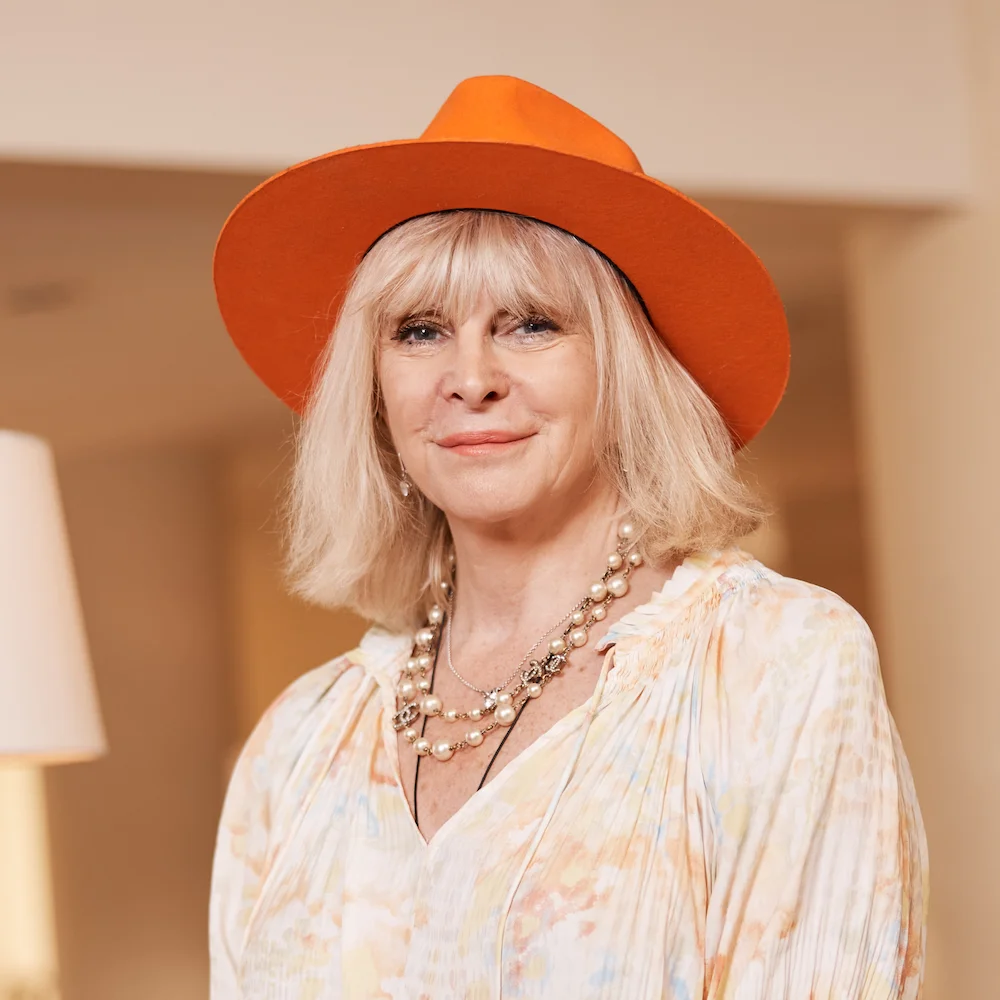Have you ever thrown a tantrum like a toddler who missed naptime or cried like a baby when they got hurt? Those are some light examples of your inner child seeking attention.
While frustration, anger, and pain are all part of life, it’s super important to acknowledge and process these emotions in a healthy way so they don’t affect you. Inner child work is all about self-introspection and taking care of those younger versions of ourselves that have been hurt in the past and still affect you in the present.
As Marisa Peer, a globally celebrated psychotherapist and the trainer of Mindvalley’s Uncompromised Life Quest, says, “If you have been waiting all your life for someone to tell you you’re amazing, you do it.”
And there is, most probably, a little child within each and every one of us who’s waiting for those loving, kind words and acceptance.
What is inner child work?
Inner child work is the therapeutic process of reconnecting with the child within. It’s the little version of you that might still be holding onto pain and fear, and it’s affecting how you think, feel, and act today.
For example, you know how sometimes you get all frustrated and angry over stuff that rationally seems like it shouldn’t bother you? That’s your inner child acting out.
But you can give that little you a makeover by healing past wounds and providing a safe space for them to be in.
What does “inner child” mean?
Your inner child is the fun, curious, and creative part of yourself that never really goes away, no matter how old you get. It’s linked to your childhood memories and that younger version of yourself.
And as a kid, you may not have been taught to deal with your feelings constructively. So those wounds get buried deep in your subconscious, only to manifest in adulthood as tantrums, outbursts, or other childlike behaviors.
What causes a wounded inner child?
Unresolved issues have a way of popping up out of nowhere, much like Uncle Larry during dinnertime. And when something triggers those issues, you better believe that your inner child will ding dong your doorbell.
Here are a few reasons why:
- Family dynamics play a big role. As Dr. Shefali Tsabary, a clinical psychologist, and , explains in her Conscious Parenting Mastery Quest on Mindvalley, kids are like sponges, soaking up all the good and bad vibes around them. So if their parents or guardians are struggling, those feelings can get absorbed and carried around well into adulthood.
- There are traumatic experiences, which can leave a lasting impact on your psyche. As Harvard professor Dr. Richard Schwartz puts it in his book Introduction to Internal Family Systems, parts of you can get frozen in time, trapped in a metaphorical prison, and unable to move on from those scary, confusing moments. Studies show that they need help to be liberated and heal their trauma.
- Dysfunctional attachments to primary caregivers. This can lead to some serious emotional and behavioral issues down the road. If you don’t get your needs met as kids, you may start to believe some pretty negative things about yourself, like “I’m not good enough” or “I don’t deserve love.”
There could be a number of factors that contribute to long-lasting harmful effects on your psyche. But the good news is that through inner child work, you can begin a deep process of self-healing and reclaim the joy and creativity you may have lost along the way.
5 signs you need inner child healing
What are the ways your inner child pops up in adulthood? Here are some signs that they need some serious TLC:
- Repeating patterns in your relationships. You may find yourself over and over again in the same relational patterns, such as being attracted to emotionally unavailable partners or experiencing fear of intimacy when people get close to you.
- High levels of emotional reactivity. Being emotionally reactive can translate to lashing out when your anger is out of control, or going into total freeze mode when experiencing intense emotions.
- Self-sabotaging behaviors. Unhealthy coping mechanisms (e.g., excessive drinking, overeating, procrastination, etc.) usually hide highly uncomfortable emotions that you haven’t learned to process as a little child.
- Struggling with mental health. Anxiety, depression, or unhealthy beliefs can be correlated with a wounded inner child who doesn’t feel loved, heard, or seen.
- Feeling overly independent or completely dependent. Having the belief that “you don’t need anyone” or feeling completely lost when you’re on your own can also signal an avoidant or anxious attachment style. These attitudes can be consequences of unhealthy attachment as a child with a primary caregiver.
Inner child work exercises can be part of trauma therapies such as somatic work, EDMR, Internal Family Systems, Parts Work, art therapy, Gestalt work, and so on. Alternatively, there are a few simpler, more gentle, and more accessible practices that you can try.

How to do inner child work: 3 tips from Mindvalley experts
Growing up isn’t about losing that childlike wonder. Rather, it’s about coming to peace with what’s happened in your childhood experiences, so that you can move into your future without feeling like you’ve been recklessly abandoned.
Doing inner child work can bring back that nature of creative energy. And the truth is, connecting to the language of play, fun, compassion, and creativity is the best part of it.
So here are a few tips from Mindvalley experts on how to bring this powerful energy back to life from the inside out:
1. Unravel your childhood patterns
People often spend their entire lives uncovering and undoing the first seven years of their existence, as explained by Dr. Shefali in her Quest.
Children are highly impressionable and absorb everything in their environment during those early years. Everything adds up layer after layer, building a solid foundation for your emotional, behavioral, and thinking processes.
And even though these patterns may not help you thrive, they control your feelings, experiences, and interactions from the shadow of your unconscious mind.
So, when you dive deeper into your inner child’s shadow work, you may get a broader understanding of how your past influences your present. And now you have the opportunity to choose how to act from there.
It is only through blinding and persistent awareness that we can begin to notice how we have been repeating patterns all our lives.
— Dr. Shefali Tsabary, trainer of Mindvalley’s Conscious Parenting Mastery Quest
Dr. Shefali Tsabary’s insights
Dig into your past patterns and recall early memories of your childhood. You can use these inner child shadow work prompts:
- Rate your relationship with each of your parents on a scale from one to 10, according to the level of closeness, honesty, and connection you truly felt.
- List three adjectives that describe your parents’ strengths and another three for their weaknesses.
Answer these questions: Were your feelings allowed to be felt? How were pain and suffering dealt with? How was love expressed? What were the messages you received about life? Was life risky and avoided, or benevolent and worth living?
There are no right or wrong answers to these reflection points. It’s essential to nurture honesty and let your inner child speak to you.
And to create an even safer environment, you can tap into your creativity and paint, draw, or outline any emotions that come up and may feel more intense.
2. Align your inner child with your true desires
Regan Hillyer, a renowned manifestation teacher and trainer of Mindvalley’s The Art of Manifesting Quest, highlights the importance of allowing your inner child to come on board with your manifestation process.
Why? We repeat behaviors that sabotage our growth because our inner child holds onto the pain felt in the past, as she explains in her Quest. Sometimes, they can keep us stuck without us even realizing it.
For example, would your five-year-old self understand your adult desires? Probably not.
That’s why Regan uses the power of quantum healing to bring your inner child’s power up to the present moment and help you manifest like a pro.
Regan Hillyer’s insights:
Regan encourages you to reflect and connect deeply to your inner child through the following practice:
- Ask yourself what age were you when your inner child decided that they were not in alignment with your specific manifestation. Notice whatever may come up.
- Go back to that specific moment in time and notice what’s going on. What were you feeling? Who were you with? And what did you really need back then and never got?
- Share with your younger version your intention to manifest what you desire, what you intend, and why your intention would make your life together even more incredible.
- Ask them what they need to feel safe and excited about your manifestation.
- Give them exactly what they need and check in to see how their feelings changed.
- Show your inner child the spectacular future that you’re going to create once you manifest your desires.
- Take your younger version to the present moment and ask them if they would like to come with you. Let them fuse into your heart and feel like it’s their new home.
It’s important to remember that this process of self-discovery is all about giving yourself the love and care that you might not have received in the past.
Think of it like tending to a garden—sometimes you need to do a bit of weeding and pruning to make space for new growth, but with patience and perseverance, your efforts will yield beautiful results.
3. Celebrate your enoughness
Knowing that you are enough doesn’t make you do less, but it makes you recognize that you’re worth more.
— Marisa Peer, trainer of Mindvalley’s Uncompromised Life Quest
“If I were your doctor,” says Marisa, “your diagnosis would be that you don’t think you’re enough.” The common denominator of all our problems is that we don’t feel good enough, strong enough, or even confident enough. The list can go on and on.
In reality, it’s our wounded inner child who feels this way and who has carried a heavy burden for a really long time.
When we were young, we were made to believe that we were not good enough, strong enough, or confident enough. And that’s when the seeds of inadequacy were planted within us.
As a result, we grow up trying to overcompensate for what we think we lack. We may strive for perfectionism or even feel terrified of trying anything new that could bring joy into our lives. It’s as if our inner child doesn’t believe that they’re worthy of being loved and feeling joyful.
Marisa Peer’s insights
The mind does what it wants you to do. So tell yourself as often as you can that you are enough, and it will follow.
- Write it on your mirror.
- Sing it while driving to work.
- Set it as your lock screen.
Some people even get it tattooed, says Marisa, but you really don’t have to be so extreme.
Convincing your inner child that you’re enough may feel like a big ask, but it’s totally worth it. When you start believing in your own worth, the world around you will begin to see it too.

Love yourself from the inside out
Old wounds can feel like a hippo sitting on your chest. But when you learn how to work on your inner child, the lightness will be more refreshing than a cold glass of lemonade on a hot summer day.
Once you unburden the child version of yourself, your sweet and innocent nature will have plenty of room to shine. And who knows, you might even start moving through life with the playfulness and curiosity you buried deep down.
If you need some guidance on your healing journey, here’s where you can start:
- Conscious Parenting Mastery Quest with Dr. Shefali Tsbary. You may learn how connecting to your inner child will help you nurture harmonious relationships with your children.
- The Art of Manifesting Quest with Regan Hillyer. You can dive deep into the ins and outs of manifestations and everything it takes to materialize all of your desires.
- Uncompromised Life Quest with Marisa Peer. You’ll explore the depths of your mind and your subconscious beliefs to open up to a life full of unconditional love and abundance.
By claiming your free access, you can get a taste of this transformational wisdom and see how it works in your life. And the best part of it all is being part of a like-minded community that loves to do this profound inner work as much as you do.
Your past wounds might have shaped your life until now, but they can turn out to be much different in the future. And your inner child will be forever thankful for having the courage to meet the best version of yourself.
Welcome in.











